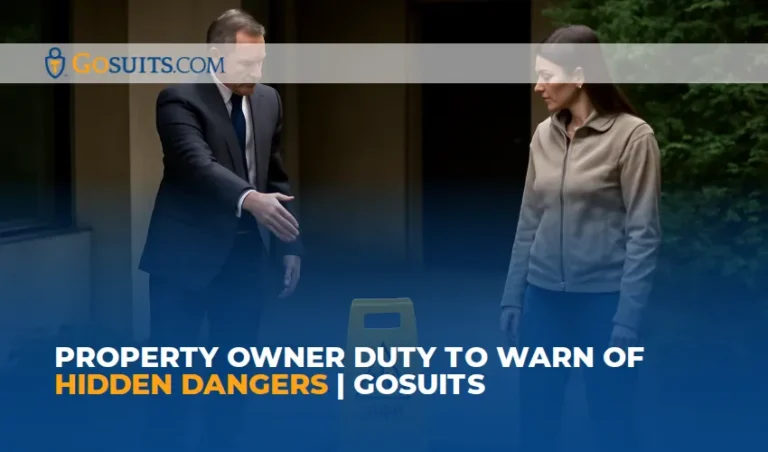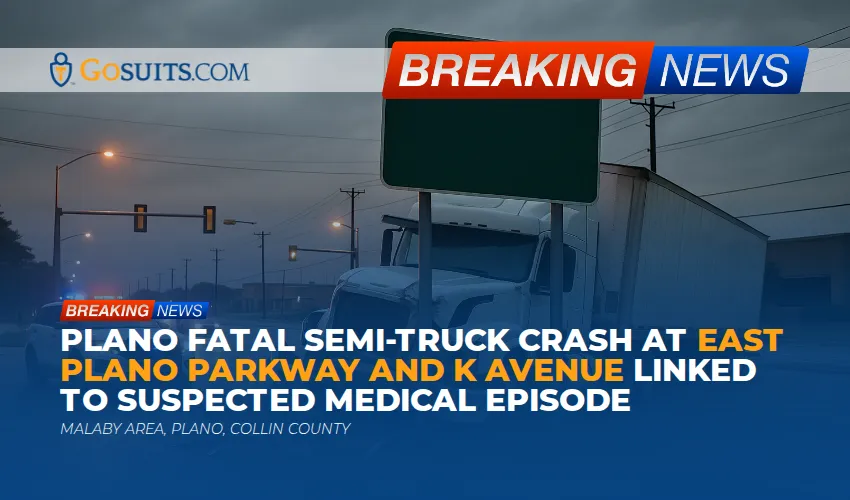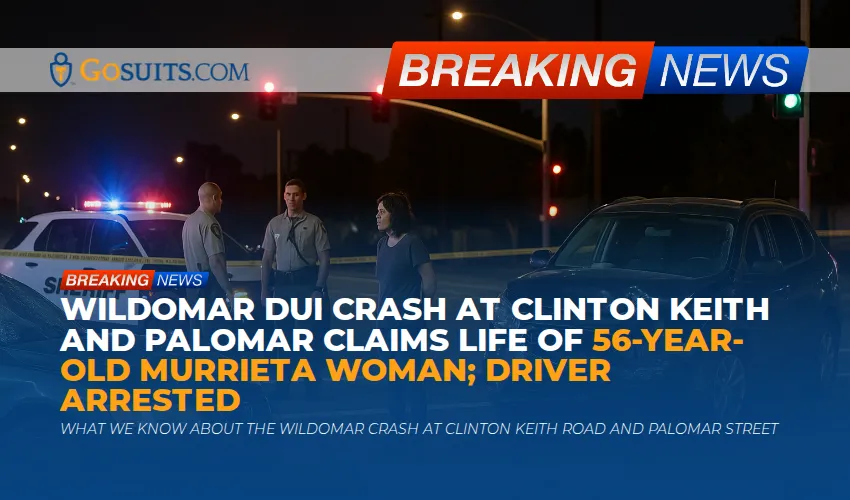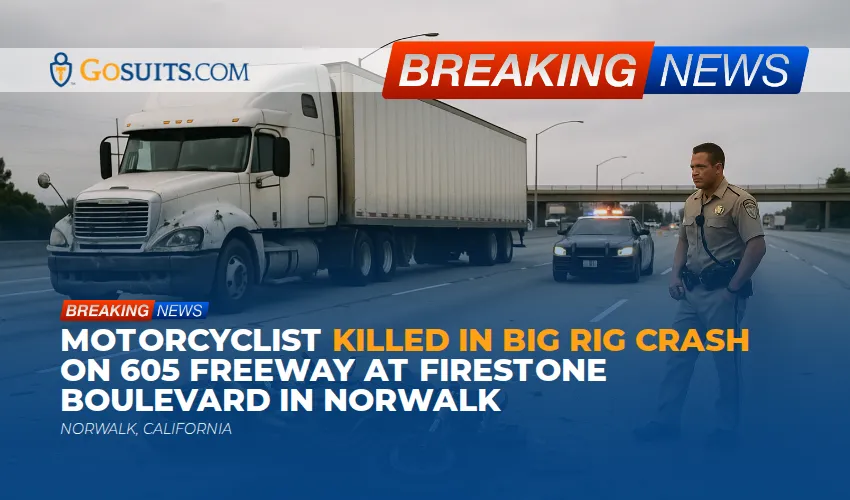- What does a property owner’s duty to warn of hidden dangers mean?
- Who is owed a duty: invitee, licensee, or trespasser in Texas, California, and Illinois?
- What counts as a hidden danger versus an open and obvious condition?
- How do actual and constructive notice work in premises liability?
- When is a warning sign enough to satisfy the duty to warn?
- How does comparative negligence affect failure-to-warn claims?
- What Texas rules apply to the duty to warn on property?
- What California rules apply to the duty to warn on property?
- What Illinois rules apply to the duty to warn on property?
- How do claims against government properties differ in TX, CA, and IL?
- What evidence helps prove or defend a failure-to-warn case?
- How long do you have to file a premises liability case in TX, CA, and IL?
- What damages are available in civil premises liability cases?
- What should you do after a slip and fall or other incident on property?
- How do insurance companies evaluate hidden-danger and failure-to-warn claims?
- How can GoSuits help you with a hidden danger or failure-to-warn case?
- Resources
What does a property owner’s duty to warn of hidden dangers mean?
In civil premises liability, the duty to warn is the obligation a property owner or occupier has to alert people on the property to hidden, non-obvious dangers that the owner knows about or should discover through reasonable care. The duty generally focuses on conditions that present an unreasonable risk of harm and are not readily apparent to a reasonable person.
Courts frequently look to the Restatement (Second) of Torts for guidance. Sections 343 and 343A explain that an owner can be liable for physical harm to invitees caused by a condition on the land if the owner knows or by the exercise of reasonable care would discover the condition, should realize it involves an unreasonable risk, should expect that visitors will not discover or protect themselves, and fails to exercise reasonable care to protect them. Many states adopt or adapt these principles through statutes and case law. See the Wex entry on premises liability for an overview.
Why this matters: Failing to warn may result in civil liability if an injury occurs and the legal elements are met. At the same time, warning is not always the only duty. In many situations, owners must also inspect and make the condition reasonably safe, especially for customers and other invitees.
Who is owed a duty: invitee, licensee, or trespasser in Texas, California, and Illinois?
How does Texas classify visitors and set duties?
Texas uses the traditional classifications: invitee, licensee, and trespasser. Invitees include customers in businesses or people on property by invitation for mutual benefit. Owners owe invitees a duty to exercise reasonable care to protect against unreasonable risks of which the owner knew or should have known. Licensees include social guests; the duty is typically to warn of known hidden dangers not open and obvious. Trespassers are generally owed only a duty not to injure willfully, wantonly, or through gross negligence, with additional protections for children under the attractive nuisance doctrine. See cases applying these rules, such as Austin v. Kroger Texas, L.P., 465 S.W.3d 193 (Tex. 2015).
How does California define duties to people on property?
California follows a general duty of ordinary care under Civil Code section 1714, rather than rigid invitee/licensee categories. Courts consider the factors in Rowland v. Christian to determine whether to limit that duty in specific contexts. Owners must act with reasonable care to keep property in a reasonably safe condition and warn of hidden hazards. See Cal. Civ. Code § 1714; and Li v. Yellow Cab Co., 13 Cal.3d 804 (1975) on comparative fault.
How does Illinois handle duties under its Premises Liability Act?
Illinois largely abolished the invitee/licensee distinction for lawful visitors and imposes a duty of reasonable care to entrants, except for trespassers, under the Premises Liability Act. See 740 ILCS 130/. Trespassers typically receive limited protection, but exceptions exist for children and specific circumstances. Illinois courts also apply the open and obvious doctrine with exceptions, such as distraction or deliberate encounter. See Ward v. K mart Corp., 136 Ill. 2d 132 (1990).
What counts as a hidden danger versus an open and obvious condition?
A hidden danger is a hazardous condition not readily observable by a reasonable person exercising ordinary attention. Examples may include:
- Concealed slippery substances on a floor without visible warning or obvious contrast.
- Unmarked changes in elevation like a recessed step in dim lighting.
- Electrical or structural defects hidden behind doors, displays, or landscaping.
- Hazardous chemical exposures without adequate notice in industrial areas.
An open and obvious condition is one that a reasonable person would notice and avoid, like a clearly visible spill with a mop bucket next to it or a brightly painted step. Even when a condition is open and obvious, some jurisdictions recognize exceptions where the owner should anticipate harm despite the obvious nature of the condition.
In Texas, the open and obvious doctrine can negate the duty to warn, subject to limited exceptions. See Austin v. Kroger. In Illinois, the doctrine is tempered by exceptions including distractions. See Ward. In California, courts apply the general duty framework and factor analysis; even where a hazard is apparent, responsibility may still exist depending on foreseeability and risk balancing.

How do actual and constructive notice work in premises liability?
To establish a failure-to-warn claim in many slip and fall cases, you often must show the owner had notice of the dangerous condition:
- Actual notice means the owner knew about the condition.
- Constructive notice means the owner should have known about it through reasonable inspections because it existed long enough or recurred often enough that a reasonable property owner would have discovered it.
State high courts have explained how constructive notice can be proven:
- Texas: The Supreme Court requires “temporal evidence” showing how long a hazard was present to support constructive notice. See Wal-Mart Stores, Inc. v. Reece, 81 S.W.3d 812 (Tex. 2002).
- California: Constructive notice can arise from failure to conduct reasonable inspections within a reasonable time. See Ortega v. Kmart Corp., 26 Cal.4th 1200 (2001).
- Illinois: Courts consider whether the property owner or occupier created the condition, knew of it, or if it existed long enough to be discovered through reasonable care, consistent with the Premises Liability Act and case law.
When is a warning sign enough to satisfy the duty to warn?
Warning signs, cones, floor stands, barricades, and verbal alerts are common ways to warn. Whether a warning is sufficient depends on:
- Visibility and placement: Is the sign conspicuous, placed near the hazard, and readable?
- Specificity: Does it describe the risk, such as “Wet Floor,” “Step Down,” or “High Voltage”?
- Timing: Was the warning deployed before the incident?
- Reasonable alternative measures: Could the owner have temporarily fixed or guarded the hazard in addition to warning?
Even a visible sign may not be enough if the hazard is severe, the area is dim or crowded, or the warning is not placed where a reasonable person will see it. In California, the general duty of reasonable care can require both warning and remediation when feasible. In Texas and Illinois, similar principles apply under the duty owed to the entrant and the nature of the risk.
How does comparative negligence affect failure-to-warn claims?
Comparative fault allocates responsibility between the injured person and the property owner, potentially reducing or barring recovery:
- Texas: Modified comparative responsibility with a 51 percent bar. If you are more than 50 percent responsible, you cannot recover. See Tex. Civ. Prac. & Rem. Code ch. 33.
- California: Pure comparative negligence reduces damages by your share of fault but does not bar recovery at any percentage. See Li v. Yellow Cab.
- Illinois: Modified comparative negligence with a 51 percent bar. See 735 ILCS 5/2-1116.
What Texas rules apply to the duty to warn on property?
Texas courts hold that owners generally have no duty to warn of hazards that are open and obvious to a reasonable person, with narrow exceptions. The Texas Supreme Court in Austin v. Kroger discussed the “no-duty” rule and clarified a limited “necessary-use” exception when an invitee must confront a known risk to perform their job and has no reasonable alternative.
How do Chapter 95 and contractor injuries affect duty to warn?
When a contractor or subcontractor is injured while doing work on real property in Texas, Chapter 95 may limit a property owner’s liability unless the owner exercised control over the work and had actual knowledge of the danger. This can affect whether the owner had a duty to warn or make safe concealed hazards on worksites.
What about recreational use and limited duties?
Texas’s Chapter 75 reduces the duty owed to people who enter agricultural land and certain other properties for recreation, often limiting liability to gross negligence or willful and wanton acts unless a fee is charged under specific circumstances.
How is constructive notice proven in Texas slip-and-fall cases?
Under Reece, claimants typically need evidence showing the hazard’s duration to prove the owner should have discovered it through reasonable inspections. Absent proof that a spill or defect existed long enough, constructive notice may fail.
What California rules apply to the duty to warn on property?
California Civil Code 1714 creates a broad duty to act with reasonable care in the management of property, including inspecting, repairing, and warning of conditions that pose an unreasonable risk of harm. The Rowland factors guide any exceptions to this duty.
What are California’s rules on notice and inspections?
In Ortega v. Kmart, the California Supreme Court held that constructive notice can be shown by demonstrating the owner failed to inspect the premises within a reasonable period before the incident, particularly in areas where spills are foreseeable.
How do warnings interact with contractor cases in California?
For independent contractors and their employees, the Privette line of cases limits owner liability in some situations, but owners may still have duties regarding concealed hazards on the premises. In Kinsman v. Unocal Corp., 37 Cal.4th 659 (2005), the Court recognized potential liability where a landowner knows or should know of a concealed hazard that the contractor does not know and could not reasonably discover, and the owner fails to warn.

What about recreational immunity in California?
California provides immunity to landowners who open land for recreational use without charge under Civil Code § 846, with exceptions. This may limit duties to warn in parks and open spaces when no fee is charged.
What Illinois rules apply to the duty to warn on property? What does the Premises Liability Act require?
Under 740 ILCS 130/, owners owe a duty of reasonable care to lawful entrants, which includes maintaining the property and warning of unreasonable risks not readily apparent. Trespassers receive limited protection, with enhanced protection for children in specific contexts.
How does the open and obvious doctrine work in Illinois?
Illinois recognizes the open and obvious doctrine but also applies exceptions. In Ward v. K mart, the state’s high court held that even if a condition is obvious, a duty may still exist when it is reasonably foreseeable that a person’s attention may be distracted. Another exception is the deliberate encounter doctrine, where a person must face the known risk to proceed.
What recreational use limitations apply in Illinois?
Illinois’s Recreational Use of Land and Water Areas Act limits liability for landowners who open land without charge for recreational use. See 745 ILCS 65/.
How do claims against government properties differ in TX, CA, and IL?
Claims against government entities often include stricter notice requirements and liability limitations:
- Texas: The Texas Tort Claims Act generally requires notice within six months, with content details and delivery to the appropriate governmental unit, subject to local-charter variations. See Tex. Civ. Prac. & Rem. Code ch. 101, including § 101.101.
- California: Administrative claims must usually be filed within six months for personal injury before filing a lawsuit. See Gov. Code § 911.2.
- Illinois: Claims against local public entities can be subject to a one-year limitation under the Tort Immunity Act. See 745 ILCS 10/8-101. Separate procedures apply for state entities in the Court of Claims.
Federal properties are governed by the Federal Tort Claims Act, which requires administrative exhaustion before suit. See 28 U.S.C. § 1346(b)(1).
What evidence helps prove or defend a failure-to-warn case?
Both injured people and property owners can benefit from early, thorough documentation. Common evidence includes:

- Incident reports prepared by the business or entity, including witness names.
- Photos and video showing the condition, lighting, signage, and placement of warnings or barriers at the time.
- Surveillance footage from hours before the incident to establish how long the condition existed.
- Inspection logs and maintenance records, including floor-walk checklists and repair orders.
- Prior complaints or similar incidents that can demonstrate notice.
- Weather data for outdoor cases involving snow, ice, or rainwater tracking.
- Policies and training materials that show the owner’s protocols.
- Emergency response records, such as EMS run sheets.
- Medical documentation connecting the condition to the injury.
In California, inspection frequency evidence can be decisive, as explained in Ortega. In Texas, “temporal” proof of how long a hazard existed is critical under Reece. In Illinois, foreseeability and reasonableness under the Premises Liability Act guide what records matter most.
How long do you have to file a premises liability case in TX, CA, and IL?
Deadlines vary by state, and special rules can apply:
- Texas: Generally two years for personal injury. See Tex. Civ. Prac. & Rem. Code § 16.003. Government cases require earlier notice under the Texas Tort Claims Act.
- California: Typically two years for personal injury. See Code Civ. Proc. § 335.1. Claims against public entities require administrative filing within six months in most instances.
- Illinois: Generally two years for personal injury. See 735 ILCS 5/13-202. For local public entities, a one-year statute may apply under 745 ILCS 10/8-101.
Shorter administrative deadlines can apply for federal, state, county, or city properties, so prompt action is important.
What damages are available in civil premises liability cases?
In civil cases, potential recoverable damages can include:
- Medical expenses for reasonable and necessary treatment.
- Lost income and reduced earning capacity.
- Pain and suffering under applicable state law.
- Property damage related to the incident.
- Out-of-pocket costs like travel to medical appointments or home modifications.
- Wrongful death damages for eligible family members under state statutes.
Availability and calculation of damages vary by jurisdiction and case facts.
What should you do after a slip and fall or other incident on property?
Steps you can take to protect your health and civil claim include:
- Seek medical care promptly and follow provider guidance.
- Report the incident to property management and request an incident report.
- Photograph or video the scene immediately, capturing the hazard, lighting, floor condition, and any warning signs.
- Locate witnesses and collect their contact information.
- Preserve footwear and clothing in their post-incident condition.
- Save receipts and records for medical treatment, transportation, and related costs.
- Avoid recorded statements to insurers until you understand your rights.
- Consult a premises liability attorney who handles cases in Texas, California, or Illinois for guidance and to meet deadlines.
Public health data shows how serious falls can be. According to the Centers for Disease Control and Prevention, about 3 million older adults are treated in emergency departments each year for fall injuries, and one out of four older adults falls each year, leading to billions in medical costs annually. See CDC’s Important Facts about Falls.
How do insurance companies evaluate hidden-danger and failure-to-warn claims?
Insurers typically consider:
- Liability theory: duty owed, whether the hazard was hidden or open and obvious, and whether a warning was reasonable under the circumstances.
- Notice evidence: proof of actual or constructive notice, inspection and cleaning logs, and video showing hazard duration.
- Comparative fault: whether the claimant could have avoided the hazard with reasonable care, factoring in lighting, crowding, and distractions.
- Injury causation: medical documentation tying the incident to the injury, imaging, and treatment history.
- Damages: medical bills, wage loss, and long-term impact.
For commercial properties in cities like Houston, Dallas, Austin, San Antonio, Los Angeles, San Diego, San Francisco, and Chicago, insurers may also compare incidents to internal benchmarks and prior claims at the same location to assess risk and settlement posture.
How can GoSuits help you with a hidden danger or failure-to-warn case?
Hidden-danger and failure-to-warn cases turn on facts that can be lost quickly, including surveillance footage, inspection logs, and witness memories. Early legal help can secure and preserve this evidence, identify all responsible parties, and track the short administrative deadlines that apply to government claims in TX, CA, and IL. Speaking with a premises liability attorney early also helps you avoid missteps with insurance carriers and allows a focused strategy for investigation, documentation, and if needed, litigation.
Who is GoSuits and how do we approach these cases?
GoSuits is a personal-injury trial firm serving clients in Texas, California, and Illinois. We handle premises liability cases involving dangerous conditions, hidden hazards, and failure-to-warn claims in communities across Houston, Dallas, Austin, San Antonio, Los Angeles, San Diego, San Francisco, and Chicago.
- Availability and communication: We are available 24/7 for a free consultation, including nights and weekends. We provide multilingual support with around-the-clock Spanish and Farsi speakers, and access to additional languages on request. You can reach us by phone, text, or secure video. We share regular case updates and return calls promptly.
- No win, No Attorney Fees: We handle injury cases on contingency. If there is no recovery, there are no attorney fees. See our policy: No win, No Attorney Fees. There are no hidden administrative fees.
- How our tools and workflow help: We built a proprietary personal injury software platform for our internal use only. It helps us move faster through investigation, evidence preservation, demand drafting, negotiation, filing, and discovery. While we are a law firm first, this technology helps us anticipate insurers’ tactics and tighten timelines.
- Experience and track record: We have 30 years of combined experience and have litigated more than 1,000 cases. Results are published on our website at gosuits.com/prior-cases. For complex matters like product cases, 18-wheeler incidents, and brain or spinal injuries, we retain qualified in-state professionals to provide testimony on liability and damages where helpful.
- Where we litigate: We handle severe injury and complex civil cases across Texas, California, and Illinois state and federal courts, including urban venues such as Houston, Dallas, Austin, San Antonio, Los Angeles, San Diego, San Francisco, and Chicago.
- Awards and recognitions: Our attorneys and cases have been recognized in several listings, including acknowledgments from TopVerdict for high-ranking settlements and verdicts across multiple U.S. counties, Top 100 Settlement in Texas, National Trial Lawyers Top 40 Under 40 (Sean Chalaki), recognition by Best Lawyers in 2023, 2024, and 2025, and selections to Super Lawyers since 2021. These listings are not a guarantee of results but reflect past acknowledgments.
- Community involvement: We are active in local schools, chambers of commerce, and nonprofit foundations, and serve on boards of trial lawyer organizations such as the Texas Trial Lawyers Association. We support consumer rights initiatives in our states.

What services do we provide in a hidden-danger or failure-to-warn case?
- Immediate evidence preservation: We send preservation notices to secure surveillance video, inspection logs, maintenance tickets, and incident reports from stores, apartments, parking facilities, and government properties.
- Scene inspection: We document lighting, sightlines, signage, surface friction, water sources, code references, and traffic patterns, often with measurements, high-resolution photos, and diagrams.
- Witness development: We identify and interview employees, managers, and third-party witnesses, and request prior-incident histories where discoverable.
- Medical coordination: We help you track treatment, assemble medical records, and organize documentation to connect the hazard to the injury.
- Legal strategy: We analyze notice, open and obvious, and comparative fault issues under state-specific standards, including Texas’s temporal evidence, California’s inspection requirements, and Illinois’s distraction exception.
- Demand and negotiation: We prepare comprehensive demands grounded in evidence and case law to promote early resolution when appropriate.
- Litigation: If needed, we file suit, conduct discovery, take depositions, and prepare for trial in the relevant jurisdiction, including federal court when appropriate.
What makes GoSuits different in how we handle your case?
- Focused caseload: We are not a volume practice. Your case receives attention from attorneys and staff who are accessible and responsive.
- State-specific strategies: We tailor approach and briefing for Texas, California, and Illinois law, including unique rules such as Texas Chapter 95, California’s Government Claims Act deadlines, and Illinois’s Premises Liability Act and Tort Immunity Act.
- Transparent fees and costs: We discuss fees, litigation costs, and net recovery scenarios openly at the outset. There are no hidden administrative fees.
- Rapid response: We have attorneys and staff at our locations ready to help 24/7, and we can initiate a free consultation immediately by call or secure video. We can meet where convenient or work entirely virtually if you prefer.
- Language access: We support clients in many languages, with continuous Spanish and Farsi support available.
How can you get started today?
Reach out any time for a free, no-obligation consultation. We can discuss your situation, outline next steps to preserve evidence, and explain timelines in your state. If we work together, we move quickly to secure records and footage, and we keep you updated at every stage.
Resources
- Cornell Law School Legal Information Institute: Premises Liability (Wex)
- Cornell LII: Attractive Nuisance Doctrine (Wex)
- Cornell LII: Negligence Per Se (Wex)
- CDC: Important Facts about Falls
- Austin v. Kroger Texas, L.P., 465 S.W.3d 193 (Tex. 2015)
- Wal-Mart Stores, Inc. v. Reece, 81 S.W.3d 812 (Tex. 2002)
- Texas Civ. Prac. & Rem. Code ch. 95: Property Owner Liability for Contractor’s Employees
- Texas Civ. Prac. & Rem. Code ch. 75: Limitation of Landowner’s Liability (Recreational Use)
- Texas Tort Claims Act
- Texas Civ. Prac. & Rem. Code § 16.003: Two-year Limitations
- California Civil Code § 1714
- Ortega v. Kmart Corp., 26 Cal.4th 1200 (2001)
- Kinsman v. Unocal Corp., 37 Cal.4th 659 (2005)
- California Civil Code § 846: Recreational Use Immunity
- California Government Code § 911.2: Claim Presentation Deadline
- California Code of Civil Procedure § 335.1: Two-year Limitations
- Illinois Premises Liability Act, 740 ILCS 130/
- Ward v. K mart Corp., 136 Ill.2d 132 (1990)
- Illinois Recreational Use of Land and Water Areas Act, 745 ILCS 65/
- Illinois Tort Immunity Act, 745 ILCS 10/8-101
- Illinois 735 ILCS 5/13-202: Two-year Limitations
- Federal Tort Claims Act, 28 U.S.C. § 1346(b)(1)






